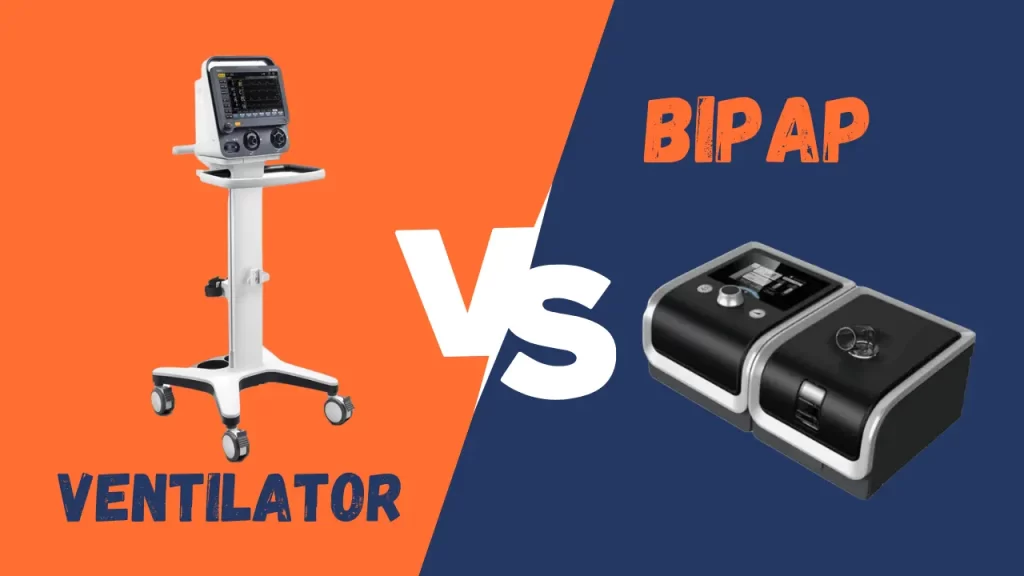Whether in an emergency room, a hospital ward, or a pre-hospital setting, hospital stretchers play a crucial role in medical care. They serve as the primary means of mobility for patients who are incapable of moving independently – and as such, understanding both their design and their diversity is demographic for all members of a medical facility’s staff.
In this discussion, we delve into the world of hospital stretchers. We are starting by exploring the various types available, such as ambulance stretchers, pediatric stretchers, bariatric stretchers, and radiographic stretchers.
We will then dive into the details behind their design and the materials used in their construction, as shaped by ergonomic considerations and the necessity of patient comfort.
Furthermore, we aim to enlighten on critical safety measures that accompany the usage of these stretchers, maintenance protocols for ensuring the stretcher’s longevity, and the crucial aspects to consider when selecting the right stretcher for varied patient needs and hospital settings.
Types of Hospital Stretchers
One of the essential pieces of equipment in a hospital is the stretcher, used for transporting patients from one place to another.
It offers easy and fast mobility, basic patient comfort and safety, and better operational efficiency for healthcare professionals. Various types of hospital stretchers cater to different patient needs and healthcare situations.
Ambulance Stretchers
Ambulance stretchers, also known as emergency stretchers, are probably the most recognized as they are seen frequently in movies and television shows. They are primarily used in pre-hospital care situations and are designed to be lightweight yet robust, facilitating easy loading and unloading from ambulances.
These stretchers are generally equipped with locking wheels and safety belts to secure the patient during transit.
Pediatric Stretchers
Designed specifically for children, pediatric stretchers offer safety and comfort features suitable for young and fragile patients. They often come with side-guard rails to prevent any accidental falls and can be adjusted to lower heights to fit children better.
In some advanced models, the stretcher can contain equipment like oxygen holders or IV poles for immediate and urgent care.
Bariatric Stretchers
Bariatric stretchers are designed to transport patients who are obese or overweight securely. With reinforced frames and broader and stronger surfaces, these stretchers can often support up to 700 lbs of weight.
They can also be adjustable in width for added patient comfort and practicality. It’s essential that bariatric stretchers are designed with patient dignity and safety in mind.
Radiographic Stretchers
Radiographic stretchers are designed specifically for patients who need to undergo X-rays, MRIs, or other scans. These stretchers have a radiolucent surface that allows the radiographic machine’s waves to pass through.
This feature makes the patient comfortable and promotes efficient workflow as it eliminates the need to transfer the patient from one bed to another.
Surgical Stretchers
Surgical stretchers are used to transport patients in and out of the operating room. They are typically lightweight and compact, allowing for easy maneuverability through narrow hospital hallways and elevators.
These stretchers are equipped with functionalities to ensure patient safety and comfort, such as firm mattresses, secure safety belts, and adjustable backrests and footrests.
Adjustable Manual and Electronic Stretchers
These hospital stretchers are built with both patient comfort and healthcare professional practicality in mind, with features that allow height adjustment and patient positioning. They can be raised or lowered, and the surface can be adjusted to various angles to support patients in sitting or lying positions.
Electronic stretchers usually offer these adjustments at the touch of a button, ensuring swift patient treatment.
Transfer Stretchers
Transfer stretchers are used solely for the purpose of moving patients between hospital areas such as wards, theaters, and intensive care units. They are typically similar in design to surgical stretchers, being lightweight and easy to navigate.
OB/GYN Stretchers
These stretchers are specifically designed for obstetrics and gynecology settings, offering features that aid in comfortable patient positioning during childbirth or gynecological procedures. They can be adjusted to get into different positions, such as the Trendelenburg position, for better examination and treatment.
The specific needs of the patient and the medical situation at hand are paramount when determining the right type of hospital stretcher. These stretchers play a crucial role in ensuring that the patient is safe, comfortable, and able to receive effective medical treatment.
Design and Material
Implications of Design and Ergonomics on Hospital Stretchers
The design of hospital stretchers places a high emphasis on ergonomics to make them user-friendly for healthcare staff while maximizing the patient’s comfort.
Key aspects of this design include the ability to adjust the stretcher’s height, headrest, and footrest as per the patient’s needs. Additionally, many stretchers feature a tilt function which allows for the alteration of the patient’s bodily position as required by their medical circumstances.
Safety components are also integral to the design of a hospital stretcher. Side rails are included to minimize the risk of patient falls, while wheel locking mechanisms keep the stretcher stable when necessary.
These features ensure the smooth and safe transportation of patients across all areas of a hospital, from the emergency department to operating and recovery rooms, general wards, and even outpatient services.
Ultimately, this design promotes immediate and efficient patient care.
Materials Used in the Construction of Stretchers
Materials used in the construction of hospital stretchers have gone through a significant evolution. From traditional wood and metal frames, the industry has moved to more durable, lightweight, and easier-to-sanitize materials.
Today, most stretchers are made from stainless steel and aluminum alloys because of their strength, durability, light-weight, and rust resistance.
Additionally, these materials are easy to clean and disinfect, which is a critical requirement in a healthcare setting. The patient surfaces in many cases are made of vinyl or other synthetic materials. This provides an effective barrier to fluids and is also easier to clean and maintain.
Patient Comfort: A Key Consideration in Hospital Stretcher Design
In addition to operational efficiency and durability, patient comfort is a vital factor that influences the design principles of hospital stretchers. Cushioning and padding are generally added to the surface of the stretcher where the patient rests.
In some advanced design models, pressure-relieving mattresses are used that can help to avoid pressure sores in patients who spend prolonged times on these stretchers.
Specialty Stretchers Based on Purpose and Use
While the basic structure of all hospital stretchers aligns with the general principles described above, some types of stretchers are designed specifically for certain purposes.
For instance, bariatric stretchers are designed for obese or overweight patients.
These stretchers are more robust, have a wider bed area, and come equipped with a higher weight capacity.
Similarly, there are also Pediatric stretchers designed specifically for children. These have additional safety features like lower beds and high-side rails.
The ambulance stretchers, another specialized type, are lightweight, compact, and come equipped with locking mechanisms to secure them within the moving vehicle.
The Anatomy of a Hospital Stretcher
Creating a hospital stretcher requires a keen understanding of numerous factors and considerations, all of which center on two primary objectives – improving the efficiency of healthcare providers and enhancing patient safety and comfort.
The selection of materials, the design aspects, and the particular features of a stretcher are all crucial in meeting these objectives.
Stretcher Safety Measures
Safety Protocols for Hospital Stretchers
Hospital stretchers constitute a key element in facilitating the secure and efficient transfer of patients within medical facilities. Nevertheless, adherence to safety protocols is paramount to mitigate the risk of unintentional injuries and prevent accidents.
Lock Systems:
The lock systems of stretchers play a critical role in maintaining stability during patient transfer. When the stretcher is stationary, these locks should be engaged to ensure that it remains immobile.
A well-functioning lock system simultaneously locks all the wheels, securing the stretcher steadily, and preventing unexpected movement.
Siderails:
Regardless of the patient’s physical condition, the use of side rails is of high importance. They provide a gripping area for patients which aids them in adjusting their position and prevents falling off.
Caregivers should ensure these side rails are locked securely when in use, and folded down when the patient is being transferred off the stretcher.
Additionally, side rails should also be checked regularly for functionality and potential damage.
Patient Restraints:
Occasionally, a more advanced safety measure is needed. Patient restraints, such as safety belts or straps, protect patients from falling or moving excessively during transportation.
Restraints should be used with care, ensuring they’re not applied overly tight, in a manner that comfortably secures the patient, and only using them when clinically justified.
Furthermore, these restraints should only be used with the patient’s consent, unless mental health or emergency medical conditions deem it necessary.
Maximum Load Capacity:
Each type of stretcher has a pre-defined maximum load capacity, usually indicated by the stretcher’s manufacturer. Overloading may cause the stretcher to tip, malfunction, or even break. If a patient exceeds the weight limit of a regular stretcher, you’ll need to use a special bariatric stretcher.
Guidelines for Safely Transporting Patients:
Proper techniques should be applied in handling and transporting patients on stretchers. It is advisable to push, rather than to pull the stretcher. Also, more than one person should be present during transport, especially when negotiating corners or elevators.
Communication is key during these maneuvers to ensure the safety of the patient. If a patient requires IVs or other medical equipment, these should be kept on the patient’s side and secured properly to prevent bodily harm or damage to the equipment.
Routine Maintenance of Hospital Stretchers:
To prevent mechanical failures, routine maintenance of hospital stretchers is essential. This includes regular inspections, lubrication, and system checks to be carried out by proficient staff members or according to the recommendations of the manufacturer.
Maintenance and Hygiene
The Crucial Role of Maintaining and Ensuring Hygiene in Hospital Stretchers
These stretchers play an indispensable role in healthcare. They facilitate patient transportation within medical facilities and assist during emergency situations, surgeries, and patient recovery periods.
Given the frequency of their usage, it is of utmost importance to properly maintain the stretchers and keep them hygienic at all times.
This prevents any potential disease transmission, enhances patient comfort, and ensures the equipment’s optimum performance.
Cleaning and Disinfection Protocols
Hospital stretchers come into contact with different patients daily. To minimize the risk of cross-contamination, these stretchers need to adhere to stringent cleaning and disinfection protocols.
These protocols often include the use of hospital-grade disinfectants which can kill a broad spectrum of pathogens, including viruses, bacteria, and fungi.
The process usually starts by removing visible dirt and soil, followed by the application of a disinfectant. It is vital to ensure that the disinfectant stays on the surface for the prescribed contact time as per the manufacturer’s guidelines; this is the time needed to effectively kill pathogens.
Stretchers should be cleaned regularly, and always between patients, to maintain the highest level of hygiene and safety. Extra attention should be paid to high-touch areas such as handrails and control buttons.
Upkeep Routines for Ensuring Longevity
For the longevity of hospital stretchers, it is important to conduct consistent and thorough upkeep routines.
These routines involve regular inspection and maintenance of the stretcher’s key components. Wheels and brakes, two of the most heavily used parts, need to be checked and lubricated regularly to ensure smooth and reliable operation.
Other routine checks should include verifying the functionality of the adjustable features like the backrest, height, and tilt controls, as well as checking for faults or damages such as broken parts, sharp edges, or torn mattresses.
Regular preventative maintenance routines can result in a significant extension of the stretcher’s lifespan, allowing hospitals to get the most out of their investment, and ensuring that patients are transported safely and comfortably.
How to Inspect Stretchers for Potential Issues
To inspect stretchers for potential issues, healthcare professionals need to examine all the components of the stretcher meticulously.
This inspection should include a functionality check of the wheels and brakes, and monitoring for squeaking sounds or any unsteady movements.
They should also inspect the overall condition of the frame, mattress, and side rails to assess for any wear and tear or structural damage.
Also, examine the locking mechanisms and adjustable controls to ensure they are operating correctly. The sturdiness of the stretcher under weight load should be checked for patient safety.
Timely identification of potential issues can prevent unfortunate accidents and breakdowns, greatly enhance the operating life of the stretcher, and maintain a superior level of patient care.
Understanding the importance of proper maintenance and hygiene for hospital stretchers is vital for those involved in healthcare settings. These aspects not only ensure the safety of patients but also prevent the spread of infections.
Additionally, they contribute to the longevity of the stretcher. To achieve all of these, there must be strict adherence to cleaning and disinfection protocols, regular maintenance routines, and diligent inspections to detect potential issues early.
Choosing the Right Stretcher
Factors to Consider when Selecting Hospital Stretchers
Choosing a hospital stretcher isn’t a simple task. A multitude of factors come into play, with cost being a significant consideration.
The price range of a stretcher can vary significantly depending on its features, functions, and manufacturer. Of course, one must take into account the costs associated with maintenance as well.
Determining whether a high-end stretcher with state-of-the-art features truly meets your specific needs or if a more basic model would do the job just as effectively is a crucial part of the decision-making process.
Size and Weight Capacity of Stretchers
Another important consideration is the size and weight capacity of the stretcher. Patient comfort and safety are paramount, so it’s crucial to choose a stretcher that is appropriate for the size and weight of the intended patients.
Most standard stretchers can support up to approximately 500 pounds, but bariatric stretchers are available for larger patients.
Additionally, the length and width of the stretcher would need to accommodate patients comfortably, but also fit through doorways and in elevators.
Versatility and Adaptability
Versatility is a critical factor to consider when choosing a hospital stretcher. Different patients have different needs; some may simply require transportation, while others may need a stretcher equipped for complex procedures or critical care situations.
The stretcher should also be adaptable to various medical devices and accessories such as IV poles, oxygen tanks, defibrillator holders, and so on.
User-Friendliness and Maneuverability
Stretcher maneuverability and user-friendliness are also essential, especially in high-stress environments like emergency rooms.
Features such as easy steering, responsive brakes, and easy-to-adjust backrests or heights are important.
The stretcher should be easy to push, turn, and navigate through tight spaces. Additionally, user-friendliness also extends to features like easily accessible storage areas or seamlessly integrated technology.
Material and Durability
The material and durability of a stretcher are equally critical. Hospital stretchers must withstand constant use and regular cleaning.
Therefore, they should be made from materials that resist corrosion and damage. Additionally, the padding and mattress materials should be comfortable for patients but also resistant to spills and easy to clean.
Maintenance and Servicing
Finally, before choosing a hospital stretcher, it’s essential to consider the maintenance and servicing aspects. The availability of spare parts, ease of making repairs, and servicing provisions by the manufacturer are all factors that play a role in the long-term usability of the stretcher. This includes warranty terms and responsiveness of the manufacturer’s customer service.
In conclusion
There is a wide array of factors to be considered when choosing a hospital stretcher. It’s essential to examine the needs of a specific healthcare setting and patient population before making a decision.
Illustration of a hospital stretcher and various factors to consider when choosing one.
Despite their ubiquitous presence in healthcare, hospital stretchers are complex pieces of medical equipment that require awareness and comprehension beyond their apparent simplicity.
By investigating and understanding their types, design principles, safety measures, and maintenance requirements, we make proactive steps toward guaranteeing patient safety, comfort, and overall quality of care.
Additionally, by learning how to choose the right stretcher for particular patient needs and hospital settings, we expand our capacity to respond effectively and efficiently to a range of healthcare scenarios.
Stretchers, in their sheer variety and utility, remain a fundamental tool in our collective healthcare precision toolkit – an understanding of which empowers us to better navigate the complexities of patient care.






